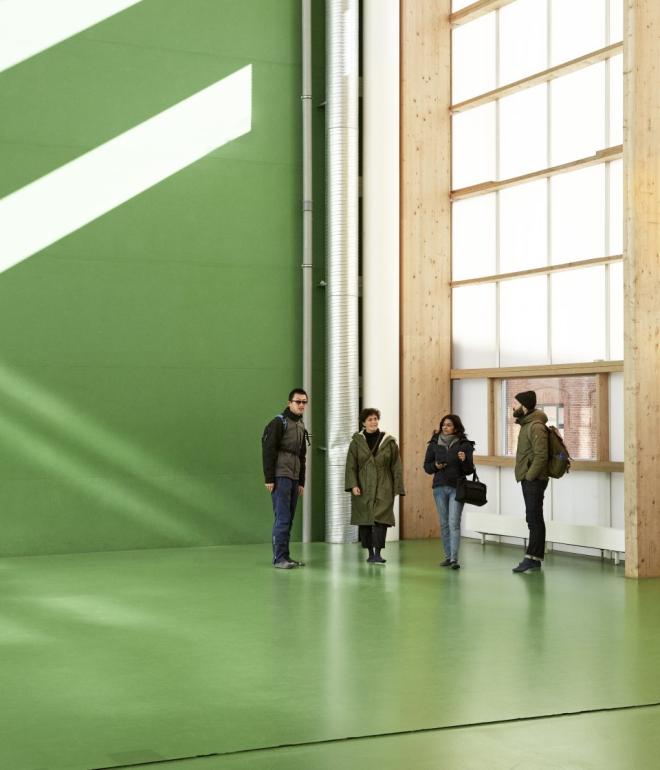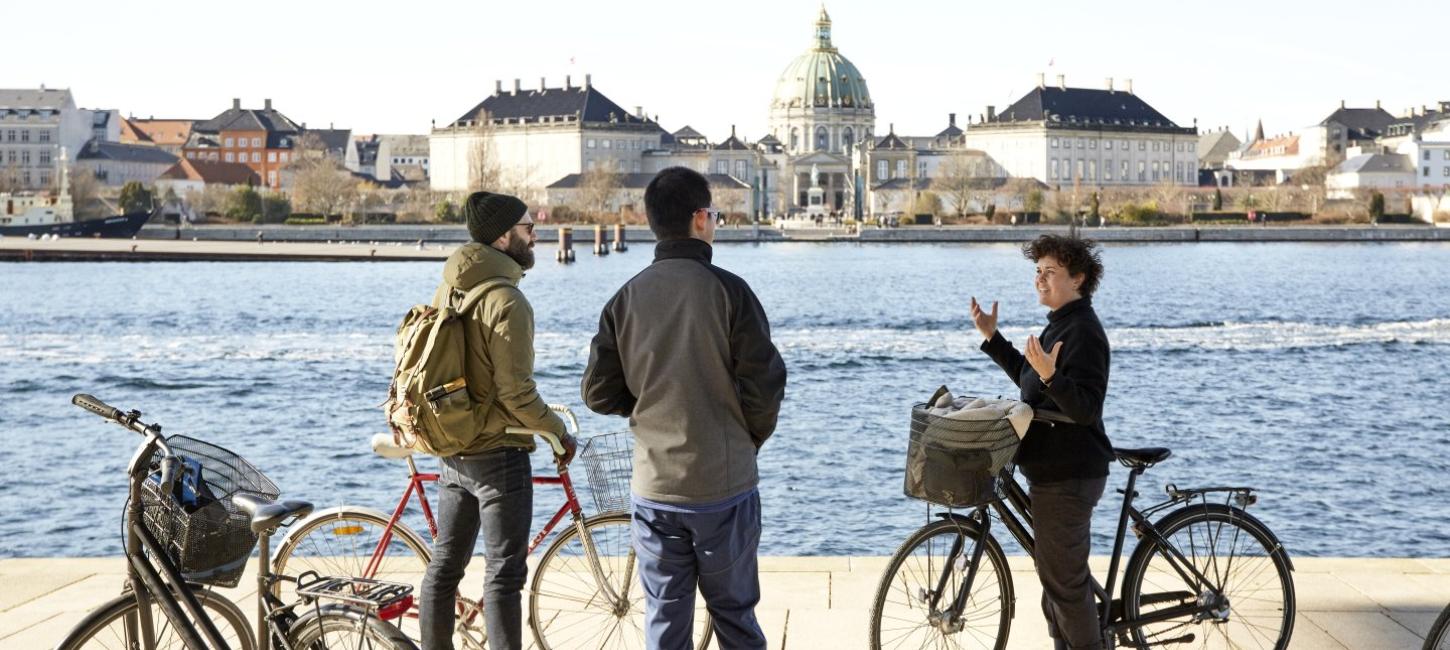
Experiencing my own city as a tourist - Guidet tour with BeCopenhagen
Written by Kasper Syhler
This article was published in April 2022.
Okay, so there's an inherent paradox in talking to visitors and tourists about Copenhagen when you're not a tourist or visitor yourself. My view will always be different, since I know the city inside-out and can share my tips and tricks and secret insights that are easier to pick up as a local. But does it sometimes get a little too much inside-out? Maybe. It's only healthy to shake things up a bit once in a while, Yes?
I set off on one of the many guided tours that Copenhagen has to offer. But what to choose? There are many options to choose from: historical tours, gastronomic tours, royal tours, or tours based on beer-brewing and tasting. The last option is something I could be (extremely) tempted by, but I would probably feel a little too much at home there. Maybe I would even be open to the accusation of looking after my own interests a little too much.
After looking through our own recommendations, I come across a trip that particularly draws me in. A half-day guided bike tour exploring the architecture of Copenhagen.
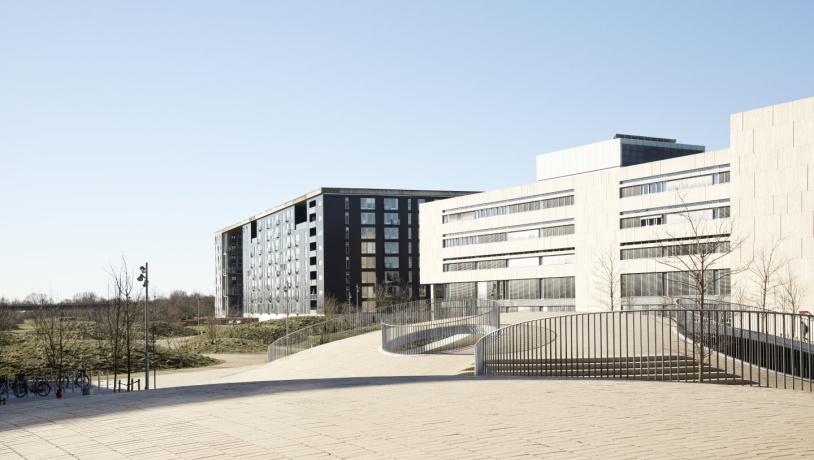
Bike parking at Karen Blixens Plads by Cobe.Photo:Rikke Westesen
Architecture is a field that I admire on a relatively naïve level. I can appreciate something beautiful, functional, impressive, smart, etc., but from a more professional angle, I don't know much about architecture, which makes it a perfect trip. My interest is sincere, my intentions are real, and my legs are made for pedaling.
I make an appointment with BeCopenhagen, who are specialists in Copenhagen’s architecture. They describe themselves as driven by a personal passion for Copenhagen, its architecture, liveability (which I'm not sure we have a good word for in Danish), and, of course, bicycles, which take up an enormous amount of Copenhagen's urban space.
Hop on your bikes and go
I arrive at 9.15 am in Fortunstræde in the city center, as agreed. We need to get bikes, tank up with water, and get a few other practical things sorted. Alice, our guide for the day, welcomes us, making sure the saddles are set at the right height, etc.
Today, there are four of us going on the trip. Sunanda, a woman from Singapore, Tony from Ohio, myself from Copenhagen V, and our photographer, Rikke.
We briefly outline some basic cycling rules. Signal right and left when turning. The arm is raised at a stop. As a local, I become very conscious of setting a good example, and I make my signals clear from the get-go. I want to help create a sense of safety on the bike; I don't know how much biking actually goes on in Singapore and Ohio.
After only 10 minutes, I learned something new. One of the reasons, Alice explains, that Copenhagen works so well as a cycling city is that the city was more or less burnt to the ground in both 1725 and 1795. After that, the city was rebuilt with wider streets, which later made it possible to build cycle paths. The other side of the coin, of course, is that we don't have many traces left of the Middle Ages in the city. It's just a fact we have to live with.
Out to the harbor
We're at the Black Diamond, and it's obvious that Alice has so many insights to share with us. BeCopenhagen's own narrative of being driven by passion is not just a sales pitch. It's coming across clearly that there is both deep knowledge and enthusiasm to grasp here. And probably also more in-depth knowledge to be found than we get. If, as a group, we had been architects and urban planners, the professionalism-control would probably have received a considerable crank-up.
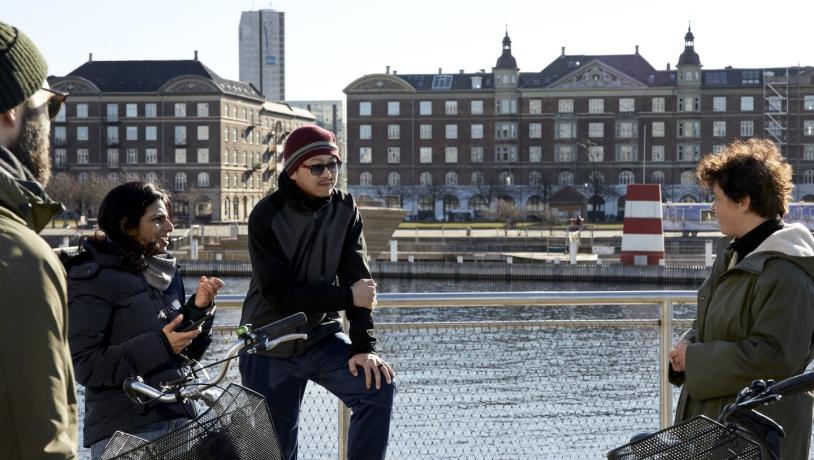
Photo:Rikke Westesen
She explains that the Black Diamond, in many ways, was the starting point for what the Port of Copenhagen has become today. When the new extension to the Royal Library was inaugurated in 1999, there wasn't really much to do in the area. I raise my hand. What was located on these grounds before? "Nothing really. Some open spaces and some container storage." It's a crazy thought, given the role the Port of Copenhagen plays in the city today.
On our way to the next stop, I ask Tony if he has enjoyed his stay so far. He says he landed the day before and will be returning to Ohio in 72 hours. He plans on not sleeping much. That's pretty wild, and on behalf of my city, I'm a bit flattered that it can attract people to fly all the way across the Atlantic for a stay of three days.
At Blox, Alice talks about the policy on edge zones. “Edge zones” refers to the areas where private buildings and public spaces meet The whole idea of edge zones, as I understand it, is to democratize these areas and give them life. So, even if the land surrounding a building is privately owned, it must be available and free to use for the people of the city. The point is perfectly underlined by the fact that a man, with a soft drink and his jacket rolled up as a pillow under his head, is enjoying a ray of sunshine right in front of Blox.
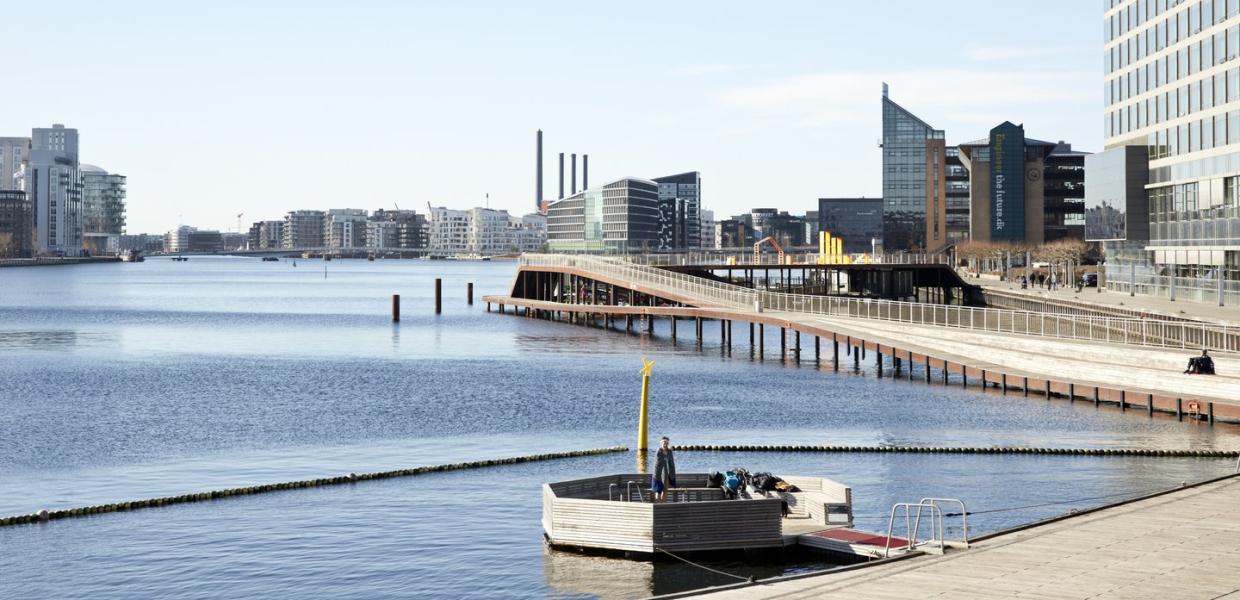
Kalvebod bølge by JDS Architects & Urban AgencyPhoto:Rikke Westesen
Did you know? I ask Rikke. She shakes her head, smiling. It's something we just seem to have taken for granted here. The point is further bolstered as we bike past some naked winter swimmers just outside the headquarters of a major bank. Where else on this earth could this kind of thing occur?
I mean, is this a dorm?
The weather is spectacular. A bit chilly - it is March, after all - but the sun is out and the sky is blue, in just the right spring kind of way. We have just passed the bridge. We're going to bike a bit further, and I see my opportunity to have a chat with Sunanda. She has also just arrived in the city, and, besides Copenhagen, she will also be going to Odense and Aarhus. She's suffering from jetlag but is still keen to get out and experience as much as possible during her time here.
After a few more stops, we arrive at Tietgenskollegiet. "This is a dorm? For what school?" Tony exclaims, and it's clear that this differs significantly from his own experience of what a dorm looks like and how it works. We are engaging in that classic talk you often end up having with Americans, about high taxes, free education, health insurance, etc.
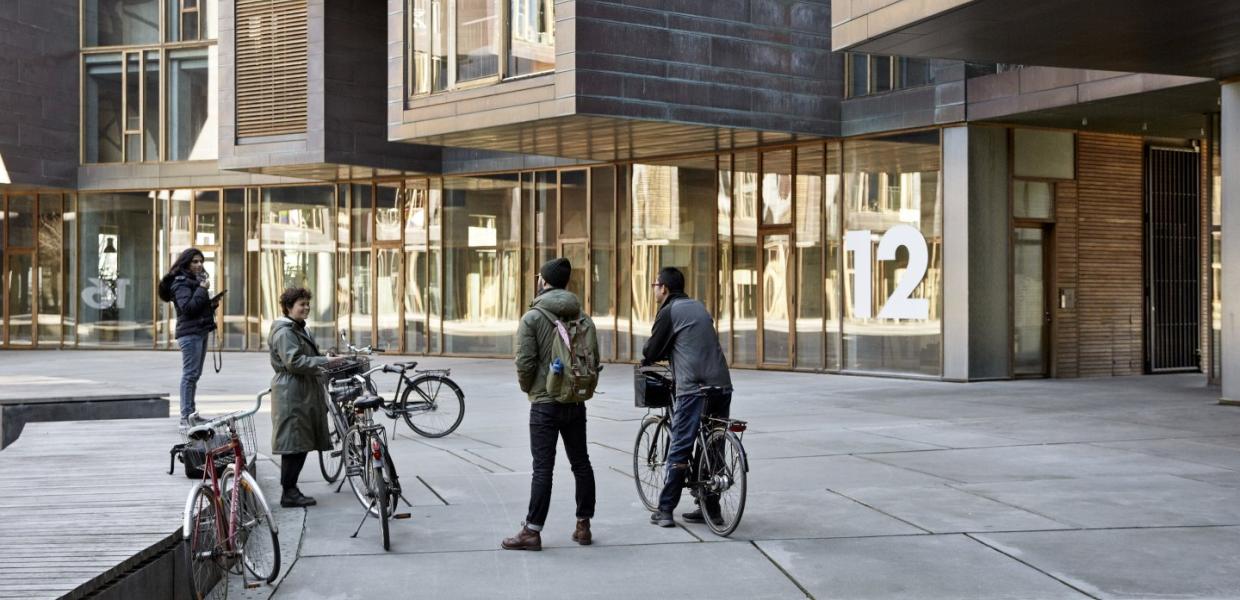
Tietgenkollegiet by Lundgaard & TranbergPhoto:Rikke Westesen
For my part, I must say that I am also quite impressed. It's a spectacular building, considering its student housing, but again, as I understand it, it was built at a time when there was a great need to make Copenhagen an attractive choice for students. That's why a bit more effort was put into it.
Open-faced sandwiches in the library
We've been on our bikes for a few hours now and it's time for a break. The café in the Neighbourhood Centre on Amager offers a bit of everything. The photographer and I grab a cup of coffee, while Tony and Sunanda see their chance to cross open-faced sandwiches off their bucket list. One slice with fish fillet and another with egg and shrimp.
Feeling well refuelled, we land at the next stop on the route, which for me is the hidden gem of the day. Prismen, a sports and cultural centre on Holmbladsgade, designed by Dorte Mandrup, is a completely new acquaintance for me. Here, you can play basketball, football, etc. You might think it's just another sports hall, but there's a very special atmosphere, almost greenhouse-like, that you feel when entering the Prism. It's probably the transparent canopy and green floors that do the trick.
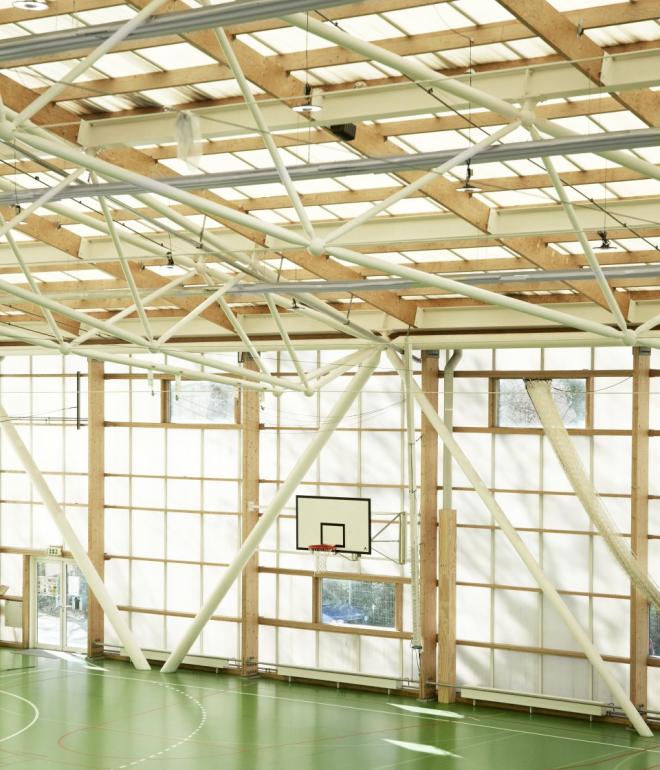
Alice explains that it is technically not seen as a sports hall, but more of a roofed sports facility. There is something structural in the wording that I don't quite understand, but which actually forms the basis on which the design has been approved. That is a rule interpretation that meets with my approval.
We bike on the outskirts of Christiania and, on the other side of a small lake, the gastronomic landmark, Noma, is located. Tony says he tried to make a reservation without luck. He is not the only one who's gone in vain; it requires patience to get a table here. When he checked the prices afterward, he was actually okay with the fact that it didn't work out. I suggest he take a trip to POPL and grab a burger, as a more accessible alternative. He will consider that.
Next stop: Free access to CopenHill and a view over the city
And now we have arrived at Bjarke Ingels' CopenHill, and we are eager to get up high and check out the view of the city. We take the lift up, which I recommend. Not because it's that hard to walk up, but because you get to see what's hiding under the ski slope when you take the glass elevator. The incinerator looks surprisingly different than I imagined, but what do I know about incinerators anyway?
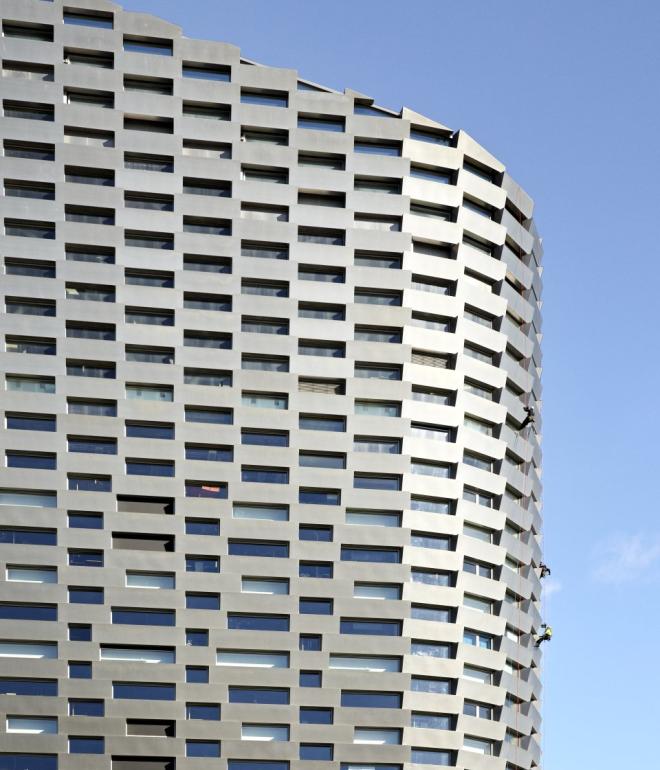
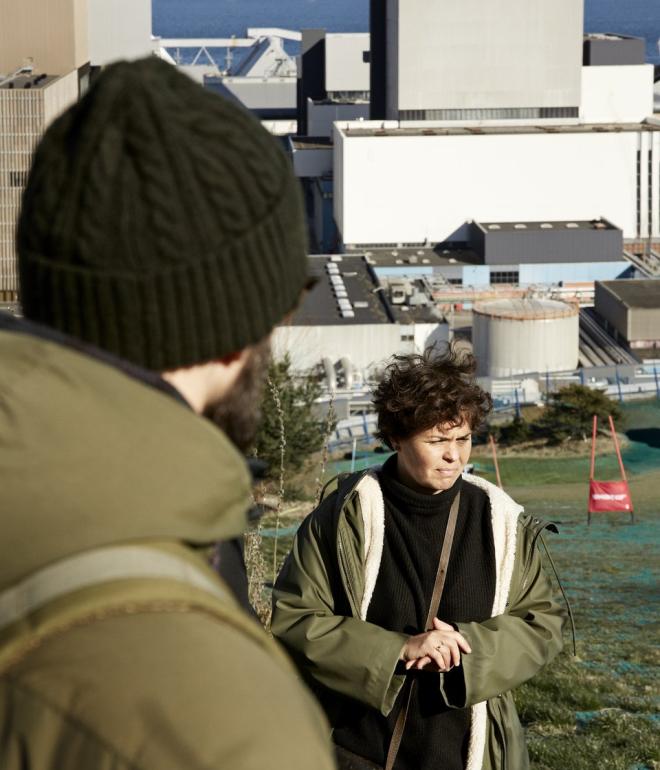
I always took for granted that you could just go up to CopenHill whenever you want, but now I have a more in-depth understanding of why that is. Again, it draws threads back to the edge zone concept, and I'm briefly moved by the democratic nature of all these things that we've been around, being as accessible as they are. It's actually quite amazing when you come to think of it. At CopenHill, of course, you need to book an appointment if you want to ski, climb, or try other urban mountain sports.
We take in the scenery and form an overview of where we've been and where we're about to go next. We've gone a little over time. Alice has many things she wants to share and asks if we're up to making one last stop (which ends up being the second to last. We also take a quick stop as we cycle over Inderhavnsbroen) at the Opera. The mood is good, but some participants are running out of steam. Even in first gear, the bike is heavy to pedal. At the Opera, we get the short version of the story about the differences between the architect, Henning Larsen, and patron, Mærsk Mc-Kinney Møller; a story I'm making a note to read up on.
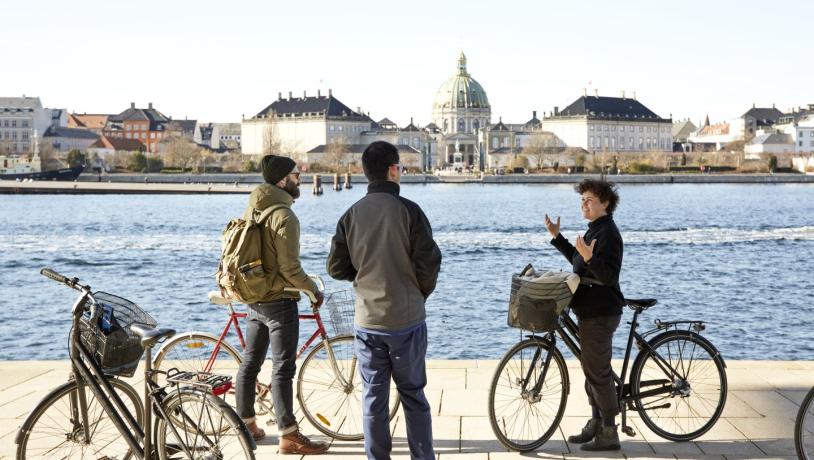
Photo:Rikke Westesen
Would do it all again
And now, we are back at the starting point. Filled up with all the impressions and insights that Alice has sprinkled on us, but also by the good weather, and the bike ride of course. Seeing my own city from a completely new perspective has been a great experience, and I sense that my fellow participants, who are completely new in terms of getting to know the city, also got everything they wanted.
As we park the bikes along the BeCopenhagen facade at Fortunstræde, we say goodbye to Tony and Sunanda, who are speeding off in separate directions. They have a lot to see before their journey continues. We're just heading back to the office and having a cup of coffee, but that's pretty good too. It was a plus that Tony and Sunanda were on the trip. Seeing everything through their eyes made us look at the city in a new, refreshing way. But without Alice, our guide for the day, who showed us the way and shared her insights and knowledge with great passion, none of this could have happened, of course. A huge thanks to her for overflowing with knowledge about the city, its development, and architectural gems.
In the office, I briefly tell the others about the day and feel the enthusiasm flowing naturally, and I must say that it's definitely worth coming along on one of these guided tours. As I said, there are many to choose from, and there is certainly a difference in content and quality, but BeCopenhagen's tours are all to be given the thumbs up. And don't just take my word for it. Tony gave 5 out of 5 stars on Tripadvisor and would do the trip again if possible.
